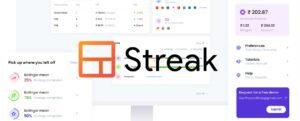Enterprise Resource Planning (ERP) software has emerged as a critical tool for modern businesses seeking to streamline operations, enhance efficiency, and achieve higher productivity levels. However, not all ERP solutions are created equal, and choosing the right one requires careful consideration and alignment with the organization’s needs, goals, and processes.
Tips to Determine the Perfect ERP Software
Deciding the perfect fit between an organization and ERP software depends on some critical factors discussed below.
Understand Your Business Needs
The first step in selecting an ERP software that aligns with your organization is understanding your business needs thoroughly. Identify the pain points, inefficiencies, and bottlenecks in your current processes. Determine the specific functionalities and features that will address these challenges. It could range from financial management, supply chain optimization, inventory control, customer relationship management (CRM), and human resources to analytics and reporting.
Define Your Objectives
Clearly define your organization’s objectives for implementing an ERP system. Are you aiming to improve department collaboration, reduce operational costs, enhance customer service, or gain better insights into your business data? Your goals will shape the selection criteria for the ERP software.
Scalability and Flexibility
Consider the ERP software’s scalability and flexibility. As your organization grows, your needs may change, so the software should be able to accommodate increased data loads, user numbers, and additional functionalities without significant disruption.
Industry Fit
Different industries have unique requirements and regulations. Look for ERP solutions that have a strong track record in your industry. Industry-specific ERP systems often come with preconfigured features that cater to your specific needs, making the implementation process smoother.
Customization vs. Out-of-the-Box
Decide whether you need a highly customized ERP solution tailored to your organization’s exact processes or if you can work with an out-of-the-box solution that requires minimal modifications. Customization can provide a perfect fit but might be more expensive and time-consuming.
Integration Capabilities
Modern organizations use various software applications to manage different aspects of their business. Your ERP software should have robust integration capabilities, allowing it to seamlessly connect with your existing systems, such as CRM, e-commerce platforms, and productivity tools.
User-Friendly Interface
The usability of ERP software is crucial. An intuitive user interface can significantly reduce employees’ learning curve, leading to quicker adoption and higher productivity. Consider conducting demos or trials to assess the software’s user-friendliness.
Total Cost of Ownership (TCO)
The cost of implementing and maintaining an ERP system extends beyond the initial purchase price. When planning your budget, it’s essential to consider all expenses involved, including licensing, implementation, training, customization, ongoing support, and potential upgrades. Compare the TCO of different ERP solutions to make an informed decision.
Vendor Reputation and Support
Research the reputation and track record of the ERP software vendor. Read reviews, seek recommendations from peers in your industry, and assess the vendor’s customer support services. A reliable vendor can make a significant difference in the success of your ERP implementation.
Change Management and Training
ERP implementation often requires a change in processes and workflows. Ensure your organization is prepared for this change and allocate resources for proper training and change management initiatives. A successful implementation requires the active involvement and support of your employees.
Conclusion
Selecting the right ERP software for your organization is a critical decision that should not be taken lightly. By understanding your business needs, setting clear objectives, considering scalability and flexibility, evaluating industry fit, and assessing factors like customization, integration capabilities, user-friendliness, total cost of ownership, and vendor support, you can make an informed choice that leads to a seamless ERP implementation. Remember, the goal is to find a software solution and establish a partnership that enhances your organization’s operational efficiency and growth for years.










